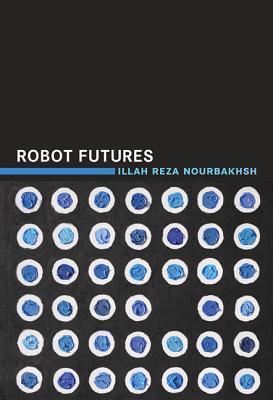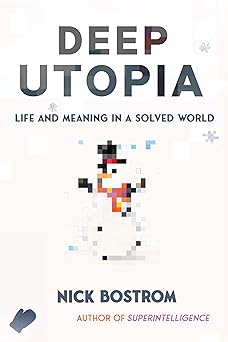
Robot Futures
Book Description
What if tomorrow’s world was ruled not by humans, but by the very machines designed to serve them? In *Robot Futures*, Illah Reza Nourbakhsh plunges into a breathtaking exploration of humanity's relationship with intelligent technology. As autonomous robots evolve, the line between helper and threat blurs, igniting debates on ethics, identity, and freedom. With vivid scenarios that spark the imagination and challenge our assumptions, each page raises urgent questions: Who truly holds the power in a world of artificial minds? Are we ready to embrace a future where robots redefine what it means to be human?
Quick Book Summary
"Robot Futures" by Illah Reza Nourbakhsh envisions a near future where intelligent robots become intertwined with human society, fundamentally reshaping relationships, ethics, and power structures. Nourbakhsh combines accessible explanations of technological trends with imaginative scenarios, exploring how autonomous machines might challenge our assumptions about agency, privacy, and humanity’s place in the world. He raises provocative questions about stewardship, agency, social consequences, and the role of design in shaping the kind of future we want. The book encourages readers not to passively accept a technology-driven destiny, but to actively participate in deciding what kind of robot-human interaction will define tomorrow. Ultimately, "Robot Futures" serves as both a warning and a call to action, urging us to thoughtfully navigate the rise of intelligent machines.
Summary of Key Ideas
Table of Contents
Emergence of Autonomous Robots and Social Integration
Nourbakhsh begins by mapping out the rapid pace of robotics and artificial intelligence advancements, highlighting a future teeming with machines able to perceive, learn, and act independently. He explores how these robots will no longer be distant curiosities relegated to engineering labs but will become coolly integrated into the fabric of everyday life. This integration is not merely technological—it also challenges cultural and social norms, forcing humans to reconsider what roles are uniquely our own. The blending of robots into society brings forth new interactions and relationships that test the boundaries of empathy and trust.
Ethical Challenges and Human Identity
With robots encroaching on tasks once considered distinctly human, the author delves into the philosophical dilemma of human identity. What makes us unique when machines can mimic our behaviors, communicate, and even forge emotional bonds? Nourbakhsh grapples with concepts of consciousness, selfhood, and the difficulty of defining humanity in a world where intelligent agents might possess their own kinds of autonomy. He suggests that human distinctiveness could increasingly hinge on qualities like ethical judgment, creativity, and the capacity for nuanced emotional connections.
Power, Control, and Agency in a Robotic World
The book raises deep concerns about power and control as robots become more autonomous. Nourbakhsh examines how decision-making authority may shift from humans to algorithms, posing fundamental risks to privacy and freedom. Who gets to program these robots—and whose interests do they serve? He discusses the rise of surveillance, the possibility of manipulation at social and personal scales, and questions the adequacy of existing safeguards or regulations. The autonomy of machines is thus portrayed as both a technical marvel and a challenge to societal norms of agency and accountability.
Design Responsibility and Shaping Robotic Futures
Responsibility for the future, Nourbakhsh insists, lies not in technology itself but in the intentions and values of its creators and users. He advocates for deliberate design that foregrounds ethical principles, user empowerment, and collective well-being. The book describes how engineers, policymakers, and citizens must collaborate to ensure that robots enhance—not undermine—human flourishing. Rather than passively inheriting a robotic future, humanity carries the obligation to shape technology according to social needs and aspirations.
Speculative Scenarios and Societal Impacts
Throughout, Nourbakhsh enlivens his analysis with speculative scenarios—provocative vignettes that illustrate both the promise and peril of advanced robotics. These thought experiments depict worlds where robots are caregivers, confidants, or even subtle political influencers. The scenarios are meant not as predictions, but as tools for critically examining societal impacts and stimulating public discourse. In this sense, "Robot Futures" positions itself not as a technical manual, but as a guidebook for democratic engagement in our increasingly robotic world.
Download This Summary
Get a free PDF of this summary instantly — no email required.





